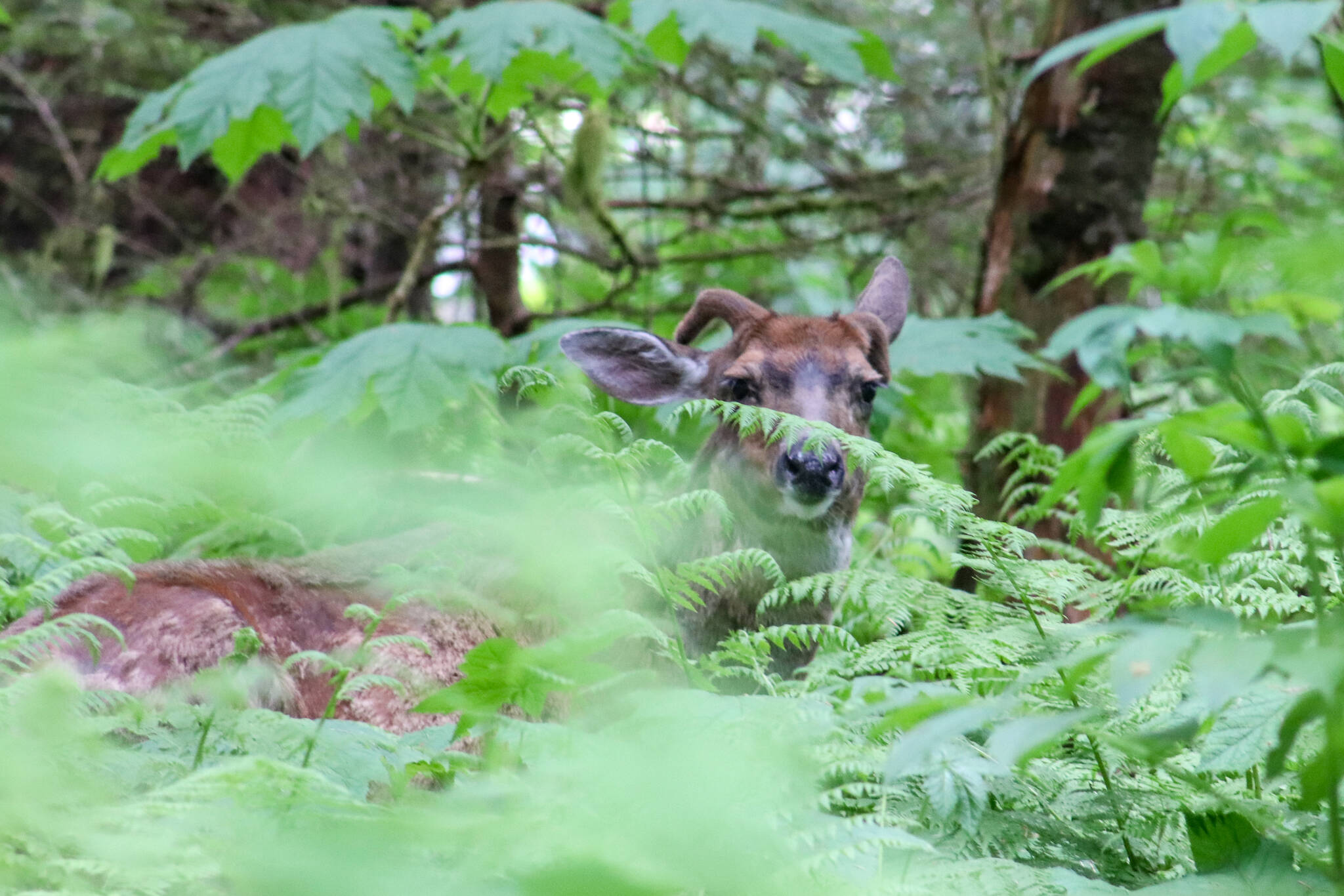The state of Alaska is developing plans to transplant Sitka black-tailed deer to the southern Kenai Peninsula, the Alaska Department of Fish and Game announced in a June 3 press release.
Currently, the southern peninsula does not hold a population of black-tailed deer; ADF&G has been developing a strategy to capture and translocate the animals — native to the coastal rainforests of Southeast Alaska and British Columbia — in response to a public proposal introduced at a Board of Game meeting in March 2023.
Per the release, the translocation project follows ADF&G’s focus on identifying ways to maintain and increase food security throughout Alaska, specifically through the harvest of wild game animals. The goal of the project is to evaluate the success of an introduced deer population, track their expansion and survival rate in a new area and potentially add another big game species to the Kenai Peninsula for future harvest.
“While it may be decades before a Kenai Peninsula deer population is robust enough to be harvested, this is the first step toward that goal,” the release states.
The “initial strategy” includes capturing up to 25 deer from the Kodiak Archipelago between September and October of this year. Exact capture dates have not been finalized, but the department is considering conducting operations on Sitkinak Island, as well as “other accessible state lands.”
The deer would be captured “primarily” from helicopters using net guns, and will be “sampled for health surveillance” and outfitted with GPS collars. ADF&G notes that deer selected for translocation will be adult bucks and does without fawns at the time of capture.
Captured deer will be transported via aircraft either through Homer or directly to their destination, depending on weather limitations, the release states. Possible release sites, based on habitat considerations and weather patterns, include coastal land south of Kachemak Bay.
Once the deer are released, they will be monitored through the GPS collars to “evaluate their dispersal from the initial site and survival.” Additional transplants to supplement the new population may occur in future years “depending on the success of the initial translocation.”
“Capture operations are challenging even under perfect conditions; plans will remain adaptable to ensure the safety of ADF&G staff and the animals being handled,” the release states.
Translocation of Sitka black-tailed deer has historical viability, according to ADF&G, with deer already inhabiting lands in Prince William Sound and Kodiak thanks to previous efforts. The Cordova Chamber of Commerce first transplanted eight deer from Sitka to islands in Prince William Sound in 1916; 16 more deer were introduced to the islands between 1917 and 1923. These original 24 animals “survived and flourished,” eventually spreading to the mainland and other islands in Prince William Sound. Legal hunting began in 1935, and the annual harvest today averages around 2,000 deer. Sitka black-tailed deer were also transplanted to the Kodiak Archipelago in 1924 and 1930, “where they have persisted and expanded,” and separate from translocation efforts, deer have “occasionally” been sighted in Seward and as far north as Anchorage.
ADF&G reminds the public that there is currently no hunting season for deer anywhere on the Kenai Peninsula.
The department also asks the public to report deer sightings to the Soldotna or Homer ADF&G offices. Reach the Soldotna office at 907-262-9368; reach the Homer office by calling 907-235-1725.



